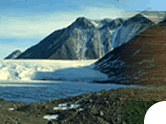Global Litter Invertebrate
Decomposition Experiment
Tambunan, Malaysia
Site Manager
Dr.
Homathevi Rahman
Dr.
Mohamed Maryati
Director
Institute of Tropical
Biology and Conservation
University of Malaysia Sabah
Locked Bag 2073
88999 Kota Kinabalu, Sabah
Malaysia
Fax: (+60) 88 435311
Site Description
Mahua is located within the Crocker Range National
Park (CRNP) which is on the southern section of the Crocker
Mountain Range in Northwest Borneo, Sabah, Malaysia (Isa
et al., 2001). A large extent of tropical rainforest highland
divides the west coast of Sabah from the remote interior
regions of the state. The Crocker Range consists of several
rugged and uninhabitable peaks over 1500 m, including Gunung
(G) Alab (1964 m), G. Tambuyukon (2579m), G. Trusmadi (2642m)
and G. Kinabalu (4218m) (Isa et al., 2001). The rich forest
resources that have been most vulnerable to unsustainable
exploitation here include both timber and non-timber products.
In an effort to conserve the integrity of the forest habitats
of Crocker Range, the Sabah State government had declared
two National Parks within the range, the Crocker Range National
Park (to the southwest) and Kinabalu Park (to the north)
(Isa et al., 2001).
Site Location
Using GPS,the exact site location is N 05-47.790 E 116-24.407.
Site
Area
25 ha
Site
Elevation
Site elevation is 3528 feet (1075 m AMSL).
Annual Rainfall
1997-2002: 1956 mm.
Annual Temperature
Soil
orthic acrisol (FAO) over sandstone
Native
Forest/Vegetation Types
Vegetation type is tropical lower montane forest. Research
by Ipor et al. (1999) showed that the vegetation at Mahua
MDF exhibit moderate diversity of tree species despite having
high density of plants. The species composition is considered
moderately diverse, dominated by Duabanga moluccana. Other
co-dominant species are Knema ashtonii, Agathis lanceolata,
Lithocarpus cantleyanus and Litsea ochracca. Other
less dominant species are Xanthophyllum schizocarpum,
Baringtonia sarcostachys, Shorea maxwelliana, Alseodaphne
insignis, Litsea resinosa, Beilsmedia pauciflora, Alseodaphne
foxiana, Endiandra kingiana and Litsea machilifolia.
Principal Biome/Ecoregion
moist tropical forest (Holdridge) |
GLIDE
Home
What is GLIDE?
Committees
Participants
Study Design
Protocols
Data
2005 Meeting
2003 Meeting
References
Image Gallery
Links
|
This webpage is funded by the Soil
Science Society of America.
Please contact the GLIDE headquarters
(email: glide@nrel.colostate.edu)
if you have any comments or questions.
GLIDE was a project of the
International
Biodiversity Observation Year 2001-2002
This material is based upon
work supported in part by the National Science Foundation
under Grant No. 98 06437 Any opinions, findings, and conclusions
or recommendations expressed in this material are those of
the author(s) and do not necessarily reflect the views of
the National Science Foundation. |
|
